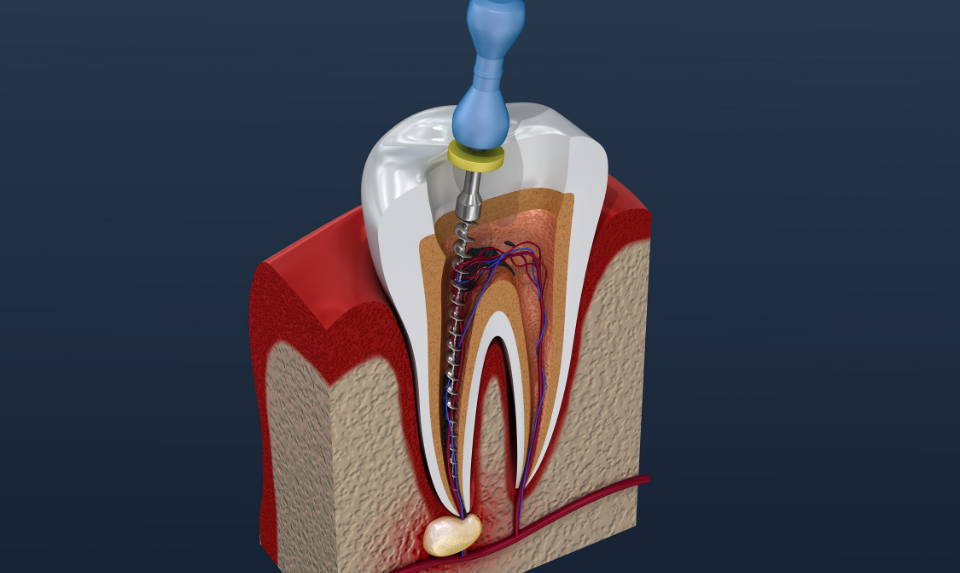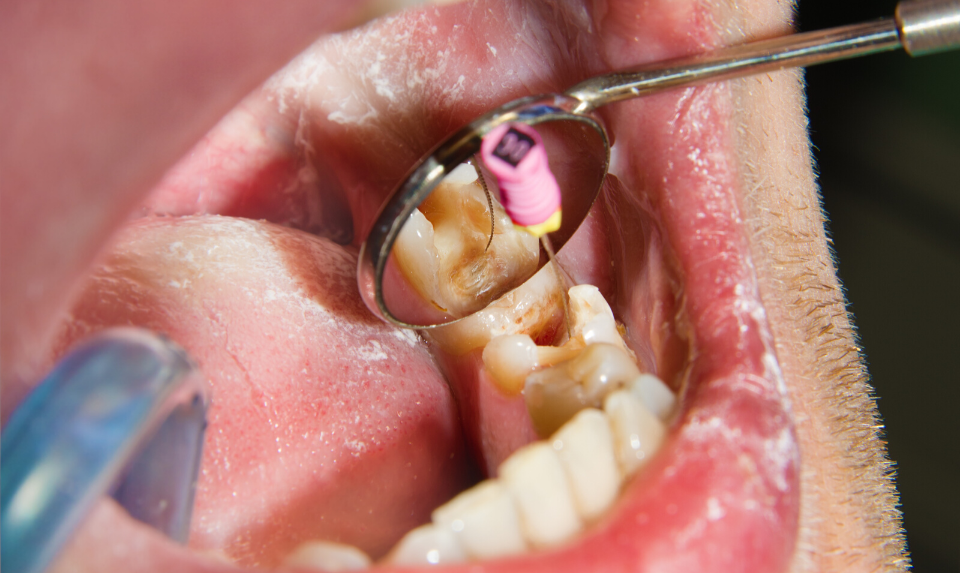What is A Root Canal Procedure?
What is A Root Canal Procedure?
A root canal procedure is a method to fix and save a tooth that is infected or severely decayed. During a root canal procedure, the pulp and nerve are extracted. Moreover, the interior of the tooth is disinfected and covered. With no treatment, the tissue around the tooth will become infected, and boils may appear.
“Root canal” is the word used to explain the actual cavity in the middle of the tooth. The pulp or chamber is the fragile area in the root canal. The tooth’s nerve lies in the ‘root canal.’
A tooth’s nerve is not vitally crucial to a tooth’s function and health after the tooth has appeared through the gums. Its only role is sensory — to give the feeling of hot or cold. The absence or presence of a nerve won’t affect its day-to-day function.
Why Does Tooth Pulp Have to Be Removed?
When a tooth’s pulp or nerve is injured, it breaks down, and bacteria start to increase within the chamber. The bacteria and other rotten debris can cause contamination or abscessed tooth. An abscess is a pus-filled pocket that appears at the tip of the roots of the tooth. An abscess happens when the virus spreads past the terms of the root of the affected tooth. In addition to an abscess, contamination in the root canal of a tooth can cause:
- Blistering that may expand to other areas of the neck, face, or head
- Bone loss near the tip of the root
- Drainage issues spreading outward from the roots
What Damages a Tooth’s Pulp and Nerve?
A tooth’s pulp and the nerve can become infected, inflamed, irritated, and because of deep decay, repeated dental methods on a tooth, and deep fillings, a chip or crack in the tooth, or injury to the face.
What Occurs During a Root Canal Procedure?
A root canal procedure needs one or more office visits and can be completed by an endodontist or dentist. An endodontist is a dentist who practices in the diagnosis, prevention, causes, and treatment of injuries and diseases of the nerve of the tooth or the dental pulp.

The initial step in the root canal procedure is to take an X-ray and examine the shape of the root canals and decide if there are any signs of disease in an adjacent bone. Your endodontist or dentist will then apply local anesthesia to paralyzed the area near the tooth. Anesthesia may not be needed since the nerve is stagnant, but most dentists still anesthetize the surrounding area to make the patient more comfortable and relaxed.
Next, to have the area dry and free of excretion during medication, your dentist will place a rubber dam (a sheet of rubber) throughout the tooth.
An entrance hole will then be drilled through the tooth. The pulp, with the decayed nerve tissue, bacteria, and associated debris are extracted from the tooth. The cleaning out process is achieved using root canal files. A series of these files are consequently placed into the entrance gap and worked down the complete length of the tooth, to scrub and scrape the sides of the root canals. Sodium hypochlorite or water is used regularly to flush away dirt.
Once the tooth is completely cleaned, it is closed. Some dentists prefer to wait a week before closing the tooth. For example, if there is a disease, your dentist may put medicine inside the tooth to clear it up. Others may want to seal the tooth the same day it is cleaned out. If the root canal is not performed on the same day, a substitute filling is placed in the outer hole in the tooth to keep out contaminants like saliva and food between meetings.
At the next meeting, to fill the inside of the tooth, a rubber compound called gutta-percha, and a sealer paste is placed in the tooth’s root canal.
The last step may require further alteration of the tooth. Since the tooth that needs a root canal procedure is one that has a huge decay or other defects, a crown, or another recovery device usually needs to be placed on the tooth to guard it, stop it from cracking, and return it to complete function. Your dentist will explain the necessity for supplementary procedures that fit.
What Should I Expect After Root Canal Procedure?
For the first few days following the conclusion of a root canal procedure, the tooth may feel irritable because of natural tissue swelling, especially if there was infection or pain before the method. This discomfort or sensitivity usually can be managed with over-the-counter medicines such as naproxen (Aleve) or ibuprofen (Advil, Motrin). Most patients can retort to their usual actions the next day.

Until your root canal procedure is completely through — that is to say, the permanent filling is in place and the crown, it is wise to reduce forcing the tooth under repair. This step will help stop recontamination of the inside of the tooth and also may limit a fragile tooth from splitting before the tooth can totally recover.
As far as oral health care is involved, brush, floss, and use an antiseptic mouthwash as you normally would and consult your dentist at regularly scheduled periods.
